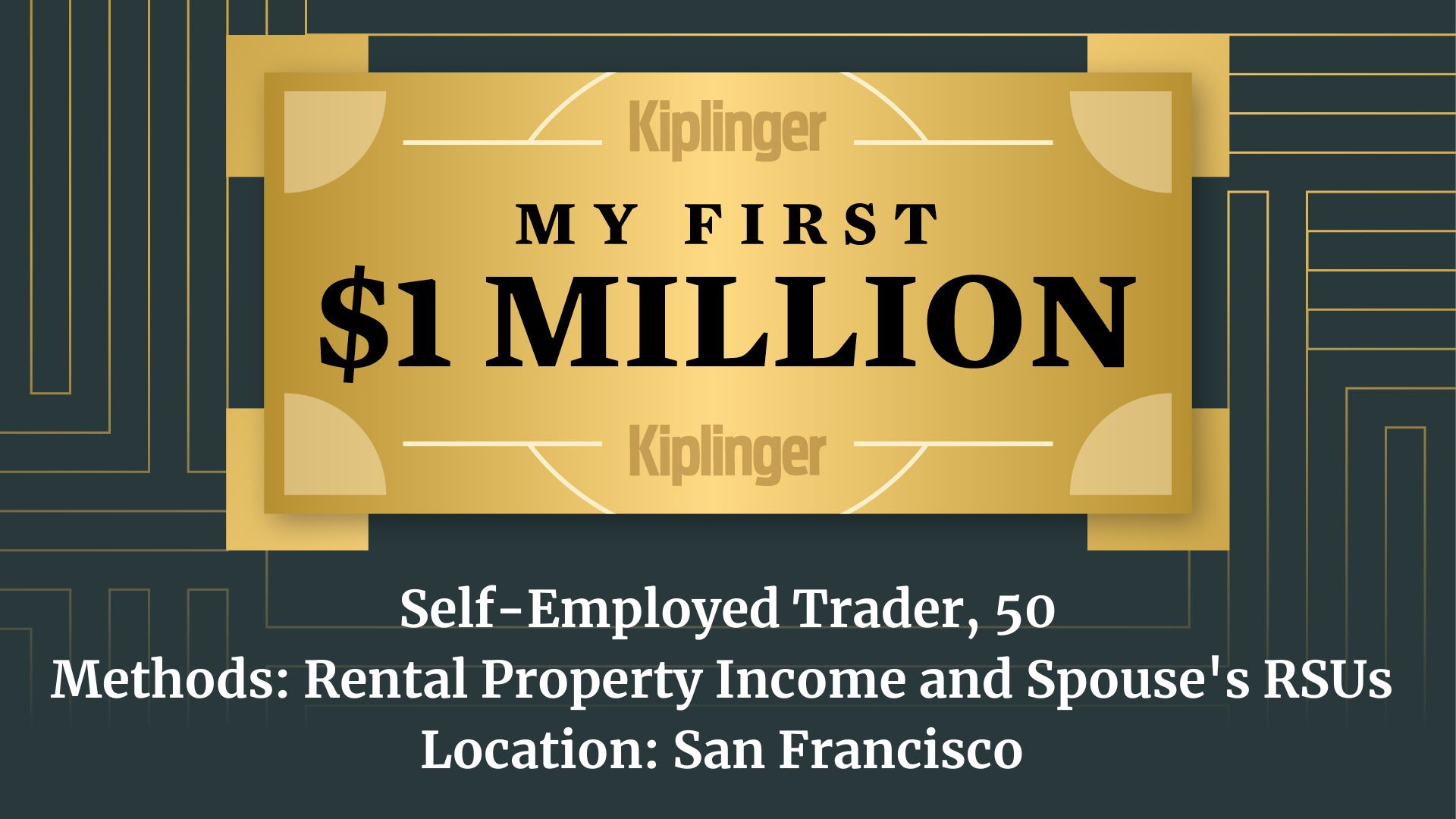What Is APY? Here's How to Score the Highest Rates
What is APY? Annual Percentage Yield, or APY, is an important factor in how much your savings could earn in a year.

What is APY? Simply put, annual percentage yield (APY) is the amount of interest earned on a savings account in one year. It takes into account compounding interest — when both your principal balance and any garnered interest earn interest. Since simple interest only pays on the principal, accounts with a high APY can help you accumulate more cash on deposits.
And the longer you keep money in an account with a high APY, the more you'll earn, which is why long-term CDs are particularly attractive right now. Currently, both high-yield savings accounts and CD accounts are offering exceptionally high APYs, in many cases over 4%.
Here's what you need to know about APY and how to score the best rates available.
From just $107.88 $24.99 for Kiplinger Personal Finance
Become a smarter, better informed investor. Subscribe from just $107.88 $24.99, plus get up to 4 Special Issues

Sign up for Kiplinger’s Free Newsletters
Profit and prosper with the best of expert advice on investing, taxes, retirement, personal finance and more - straight to your e-mail.
Profit and prosper with the best of expert advice - straight to your e-mail.
APY and compound interest
Opening an account with compound interest can be an easy way to maximize your savings. If you open a savings account with compound interest, you’ll earn interest on your savings (the principal balance) as well as on any interest you've accrued. Depending on the account, interest can be "compounded" daily, monthly, quarterly or annually.
For example, if you put $2,000 into an account that pays 1% annual interest, you’ll earn $20 in interest after a year. The next year, thanks to compound interest, you’d earn on both the principal (your initial $2,000) and on the interest. That comes out to 1% on $2,020, which would give you $2,040.
Try our savings calculator to determine how much you'll save over time.
Opening a top-earning account
APY is a key factor to consider when deciding where to deposit your savings. Both high-yield savings accounts and CDs usually offer higher APYs than traditional savings accounts, making them attractive savings vehicles for individuals looking for a fixed, predictable rate of return on their savings.
To score the highest rates possible, you'll need to compare several other factors besides APY between accounts, including minimum opening deposits and monthly fees. If you're opening a CD account, you'll need to carefully choose a maturity date that works for you financially.
Here's an example of how much you'd earn over time, depending on changes in your account's APY. If you invested $1,000 five years ago, here's what you'd have now.
APY: 4.00%
Total interest earned: $216.65
Total balance: $1,216.65
APY: 3.50%
Total interest earned: $187.69
Total balance: $1,187.69
APY: 3.00%
Total interest earned: $159.27
Total balance: $1,159.27
Use our tools below to compare rates across high-yield savings accounts and CDs.
Variable vs. fixed APY
The APY of an account can either be fixed or variable. Variable APYs fluctuate with the market and are usually associated with savings and checking accounts. On the other hand, savings rates on accounts with fixed APYs won't fluctuate. CD accounts have fixed APYs, so rates remain the same until the CD matures.
APY vs. APR
APY and APR can be thought of as opposites. APY is the rate earned on deposits if interest is compounded. APR, or annual percentage rate, is the annual cost you’ll pay to borrow money and does not take into account the compounding of interest.
APY example
You can calculate the APY on an account by using the following formula: APY = (1 + r/n)ⁿ – 1, where r= interest rate and n= the number of times the interest is compounded per year. So, if you deposited $100 for one year at 5% interest compounded quarterly, the APY would be (1 + .05/4) * 4 - 1 = .05095 = 5.095%. At the end of the year, you’d have $105.09.
Or, for an easier way to calculate how much you’ll earn, try our savings calculator.
Related Content
Profit and prosper with the best of Kiplinger's advice on investing, taxes, retirement, personal finance and much more. Delivered daily. Enter your email in the box and click Sign Me Up.

Erin pairs personal experience with research and is passionate about sharing personal finance advice with others. Previously, she was a freelancer focusing on the credit card side of finance, but has branched out since then to cover other aspects of personal finance. Erin is well-versed in traditional media with reporting, interviewing and research, as well as using graphic design and video and audio storytelling to share with her readers.
-
 What to expect from the global economy in 2026
What to expect from the global economy in 2026The Kiplinger Letter Economic growth across the globe will be highly uneven, with some major economies accelerating while others hit the brakes.
-
 What You Need to Do With Your 401(k) Before 2025 Is Over
What You Need to Do With Your 401(k) Before 2025 Is OverBefore 2025 ends, check your 401(k) contributions, investments, and catch-up eligibility to lock in this year’s tax savings and employer match.
-
 3 Year-End Tax Moves You Can't Afford to Miss
3 Year-End Tax Moves You Can't Afford to MissDon't miss out on this prime time to maximize contributions to your retirement accounts, do Roth conversions and capture investment gains.
-
 The Top 22 Gifts for Grandkids from Walmart in 2025
The Top 22 Gifts for Grandkids from Walmart in 2025From PlayStation to Labubu, you'll find the hottest gifts of 2025 for your grandkids at Walmart this year. Some of them are up to 78% off.
-
 CD vs. Money Market: Where to Put Your Year-End Bonus Now
CD vs. Money Market: Where to Put Your Year-End Bonus NowFalling interest rates have savers wondering where to park cash. Here's how much $10,000 earns in today's best CDs versus leading money market accounts.
-
 Meet the World's Unluckiest — Not to Mention Entitled — Porch Pirate
Meet the World's Unluckiest — Not to Mention Entitled — Porch PirateThis teen swiped a booby-trapped package that showered him with glitter, and then he hurt his wrist while fleeing. This is why no lawyer will represent him.
-
 Smart Business: How Community Engagement Can Help Fuel Growth
Smart Business: How Community Engagement Can Help Fuel GrowthAs a financial professional, you can strengthen your brand while making a difference in your community. See how these pros turned community spirit into growth.
-
 Smart Money Moves Savers Should Make in 2026
Smart Money Moves Savers Should Make in 2026These steps will get you on the road to achieving your 2026 savings goals.
-
 How Much Would a $50,000 HELOC Cost Per Month?
How Much Would a $50,000 HELOC Cost Per Month?Thinking about tapping your home’s equity? Here’s what a $50,000 HELOC might cost you each month based on current rates.
-
 My First $1 Million: Self-Employed Trader, 50, San Francisco
My First $1 Million: Self-Employed Trader, 50, San FranciscoEver wonder how someone who's made a million dollars or more did it? Kiplinger's My First $1 Million series uncovers the answers.
-
 Waiting for Retirement to Give to Charity? Here Are 3 Reasons to Do It Now, From a Financial Planner
Waiting for Retirement to Give to Charity? Here Are 3 Reasons to Do It Now, From a Financial PlannerYou could wait until retirement, but making charitable giving part of your financial plan now could be far more beneficial for you and the causes you support.